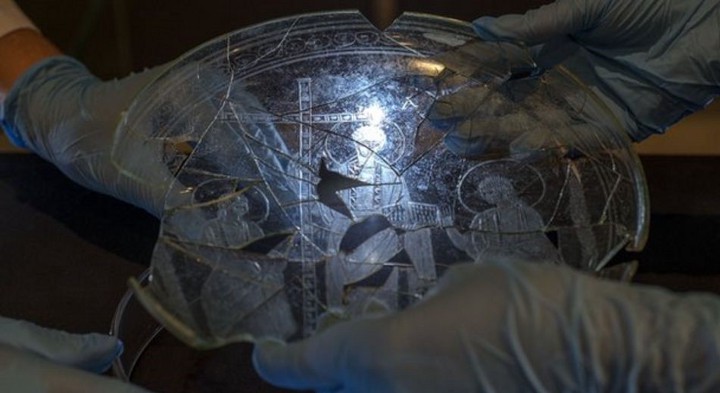Ancient Glass Plate From Spain Shows a Beardless Jesus

Our perception of what certain biblical or historical characters look like is based simply on what has been written and passed down. However, just like religion, history can be very controversial as when hard evidence is missing, it all must come down to cultural beliefs.
Almost 3 billion people worship Jesus Christ around the world, so as this is such an impactful character in the lives of many, we should know what he looks like.
Within the bible or other texts from the biblical era, there isn’t much description based on the appearance of Jesus, which seems quite strange based on his importance.
Churches have been ancient schools for over a thousand years and this is where all historical and world knowledge would be kept. Not only in the form of texts, but through different religious murals and other forms of art.
Scholars say that based on this sort of evidence that has been passed on from generations, society has built the appearance of Jesus and we move it down further with each generation.
Robert Cargill, assistant professor of classics and religious studies at the University of Iowa and editor of Biblical Archaeology Review mentioned that humanity never really knew what Jesus looked like:
“We don’t know what [Jesus] looked like, but if all of the things that we do know about him are true, he was a Palestinian Jewish man living in Galilee in the first century, So he would have looked like a Palestinian Jewish man of the first century. He would have looked like a Jewish Galilean.” (Quote by Robert Cargill)
However, from ruins had risen a piece of evidence that potentially shows information that has been lost throughout history and goes against everything said by scholars in religious studies.
Archaeologists outside the southern Spanish city of Linares had discovered a glass plate believed to have been used to hold Eucharistic bread. An image is represented on the plate with Jesus Christ and two of his apostles believed to be Peter and Paul.
Archaeologists working as part of the FORVM MMX Yacimiento group believe that this is the earliest depiction of Jesus Christ.
Coins and ceramic items found at the site appear to confirm that they coincided with the rule of Constantine, Rome’s first Christian emperor, who ruled from 306 to 337. Interestingly enough, because Christianity was persecuted at the time, the figure of Jesus Christ was presented often in the form of a fish.

The plate was found in pieces, but archaeologists were able to find 80% of the pieces and assemble them back together.
An interesting aspect of its depiction of Christ is that he is shown without a beard. There haven’t been many pieces of evidence to show that Jesus Christ actually didn’t have a beard. Based on Robert Cargill’s description of Jesus Christ, he looked like a first-century Jewish Galilean who mostly wore beards.
A newspaper report from ABC mentioned the biblical scene that is represented in the plate:
“The scene takes place in the celestial orb, framed between two palm trees, which in Christian iconography represent immortality, the afterlife, and heaven, among other things,” (Quote from ABC News)
This piece of evidence challenges what has been believed and all other depictions of Jesus Christ that have been created since the 4th century. Only time and the future efforts of archaeologists may bring similar evidence to reinforce the belief in this depiction of Jesus Christ.





